Avoid the crowds: Countryside escapes.
19th July 2021
After months of being at home, the great outdoors seems more appealing than ever. The time has come to dust off your boots and head for the hills if you're craving long hikes, fresh air, and a country pub garden. Instead of flocking to the usual destinations, avoid the crowds and head to some of these gems we've picked out!
Not only are these rural escapes easy to access by train so you can avoid traffic jams and reduce your carbon footprint, you can also save a third on your journey (and 60% off kids fares) with your Railcard.
Kingley Vale, West Sussex
You should pay a visit to Kingley Vale Nature Reserve if you're an outdoor enthusiast, love wildlife, or wish to feel at one with nature.
Among the sights and attractions at this reserve are ancient twisted trees that are considered among the oldest living in Britain. Many different butterflies can be seen, including the beautiful chalk hill blue, holly blue, and brimstone. You can also see a variety of birds, including green woodpeckers, red kites, and buzzards.
The reserve is a fantastic location for taking photographs of weathered tree stumps nestled among old trees and branches in an eerie and somewhat haunting arrangement.
There are 14 ancient monuments at Kingley Vale, including a bronze age burial mound, where climbing the hill may be more challenging than it appears; nevertheless, the views are worth the effort.
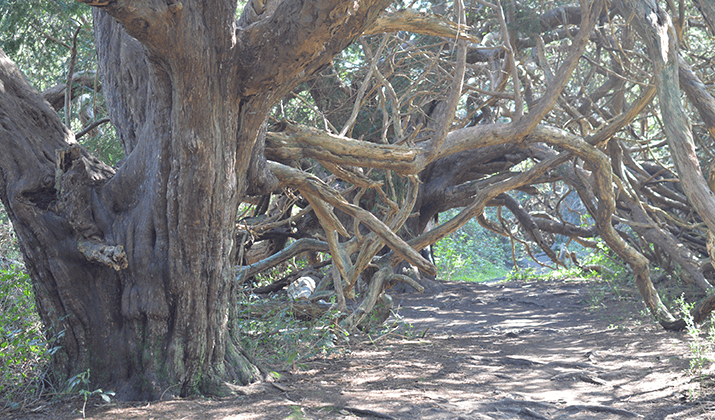
Getting there.
The nearest station is Bosham; from there, it’s roughly a 17-minute bike ride or a 57-minute walk to join the Kingley Vale hiking trail.
Sheepleas Nature Reserve, Surrey
The botanical and entomological grounds at Sheepleas were once described as the ‘finest within 30 miles of London’. The pasture was used for grazing for hundreds of years; today, trees have taken over much of the site that had once been occupied by sheep.
Sheepleas looks like a typical Surrey woodland patch at first glance, but you'll discover a few surprises if you delve just a little deeper. Enjoy ancient woodland, chalk grassland, and spectacular ever-changing wildflower displays.
These will give you views and hues that no camera can ever quite recreate. However, you should still take as many photos as possible as no two visits will ever be the same.
Flowers aren't all that Sheepleas has to offer. A large number of butterfly species have been recorded, and grasshoppers and crickets can be seen in great numbers. Birds are also plentiful.
270 acres of steep slopes, chalky mud, and various habitats make this a great place to get lost. Not keen about venturing too far off the beaten track? Then you can enjoy either the Woodland Trail or Grassland Trail, don’t forget your picnic and plenty of water.
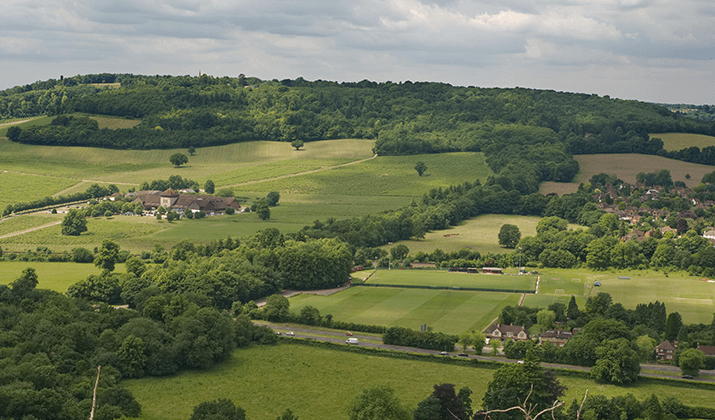
Getting there.
The nearest station is Horsley; from there, it’s roughly an 11-minute bike ride or a 36-minute walk to St Mary’s Church off Epsom Road, where you turn left to join the trail. Alternatively, you can take a short walk from Horsley station to the bus stop and then a 27-minute bus ride to the nearest stop on the Epsom Road.
Castle Eden Dene, County Durham
Castle Eden Dene is a Site of Special Scientific Interest that is home to over 450 species of plants and an intriguing variety of birds, as well as some of our favourite mammals, such as the roe deer and the fox.
Known locally as the Jungle of the North, this deep cleft is covered by dense vegetation. There are ancient, gnarled trees with tangles, heavy soil, and steep, clayey sides along the narrower parts of the valley. The deep ravine has not changed much for thousands of years.
Make sure you wear a good pair of boots, take plenty of water before you set off on your adventure.
Ash and wych elm dominate the woodland, which also contains oaks and sycamores and planted conifers. County Durham is the furthest north that yew trees grow naturally in Britain; it is one of its most unusual features.
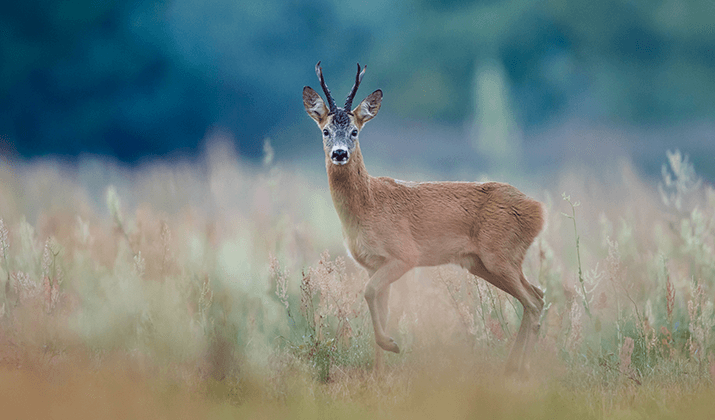
Getting there.
The nearest station is Horden; from there it’s roughly a 19-minute bike ride or roughly an hour walk to the National Nature Reserve at the Stanhope Chase entrance. You can also take a 33-minute bus ride with a short walk to the bus stop from the station and from the destination stop to the Nature Reserve.
Dee Estuary, Cheshire
The Dee Estuary lies on North Wales and North-West England’s border and is considered one of the best places in the country to see wetland and shorebirds.
Those experts at bird watching will know the drill, but this is a great way to escape the usual rural retreat and try something new and different.
It's considered a must to experience two things in this area:
First up is a visit to Hilbre Island and its sister islets Little Eye and Middle Eye, which involves a walk over the sands on the west side of the West Kirby jetty at low tide. You must start your walk at least three hours before high tide since it takes an hour to reach the first island, Little Eye, even though it is only a mile offshore. In fine weather, the views across to the Lake District and even the Isle of Man can be spectacular.
As for the second experience, you will have to wait for a rising tide at Parkgate Marsh, near Neston on the coast, during the autumn/winter months. When the tide rises the Parkgate promenade is transformed and becomes an exhibition of wading birds.
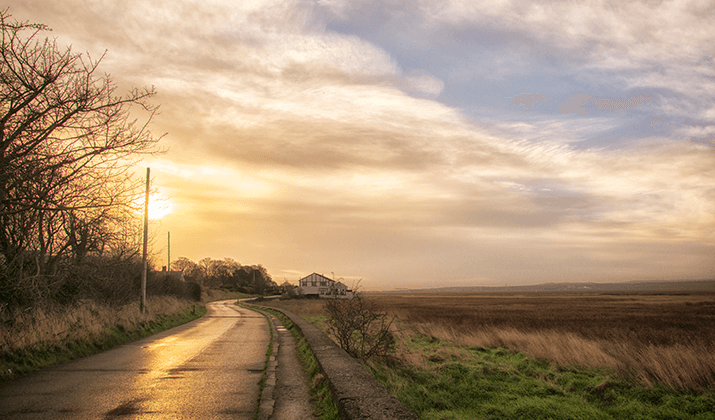
Getting there.
The nearest station is Neston, then a 23-minute bike ride, just over an hour walk or a 26-minute bus ride and a 17-minute walk from the stop to RSPB Burton Mere Wetlands, Puddington Lane.
Erewash Meadows, Nottinghamshire
In the Erewash Valley, Erewash Meadows is the largest area of floodplain grasslands and wetlands.
The wildflowers growing in the grassland attract butterflies and a host of other insects. Birds are the most famous residents of meadows. A lapwing's impressive aerial display can be seen in spring, while snipe breeding calls can be heard in the early mornings.
A birder's paradise, magnificent views, abundant wildlife, and hiking trails that preserve the area for wildlife are all part of the experience. Try to get binoculars if you can.
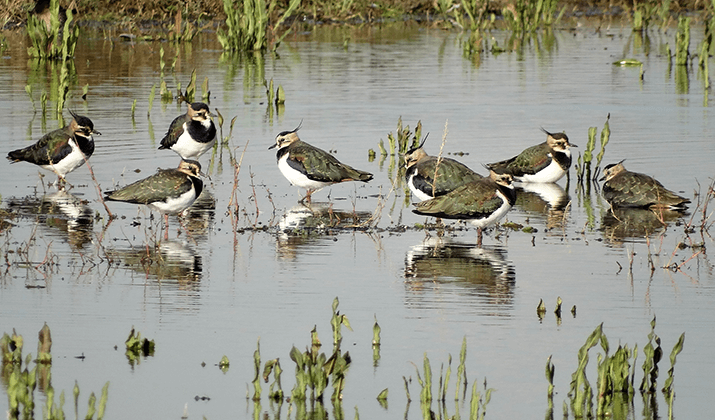
Getting there.
The nearest station is Langley Mill, and then a short 8-minute bike ride or a 26-minute walk to the Erewash Meadows Nature Reserve at the Aldercar Lane point.
Dedham Vale, Essex
As a Cotswolds alternative, Dedham is the ideal destination. You can cycle through the small village from the station to get to the vale while enjoying Georgian-styled houses, old inns, and a 15th-century church.
Dedham is one of the most attractive villages in Essex and is home to a large number of scenes that inspired famous English artists, including John Constable in the 19th century. If you plan on visiting the reserve, it would be a shame not to check out the nearby area.
Dedham Vale has been designated as a national Area of Outstanding Natural Beauty (AONB). This traditional English lowland landscape is filled with rolling farmland, meandering rivers, meadows and ancient woodlands, and a wide variety of local wildlife.
It's an incredible getaway spot that's perfect for enjoying the weekend or a few days, not only because you get to take in the picturesque scenery from another time period but also because you can embrace nature, explore the reserve, and enjoy its riverside trails.
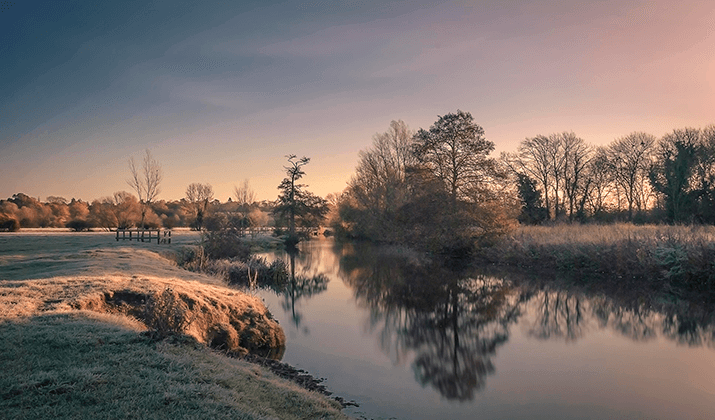
Getting there.
The nearest station is Manningtree, a 20-minute bus ride from the station, including a 4-minute walk or a 27-minute bike ride to Dedham Vale.
Travel again, save again.
- For just £30 a year, get ⅓ off rail travel plus deals on meals, hotels and loads more!
- A railcard pays for itself in just one or two journeys. So start planning your next trip today.
Safety First.
Travel with confidence. Please wear a face covering (unless exempt), travel at quieter times and book in advance where you can. Check and follow the latest Government advice and guidance on our Travel Advice page before planning your next journey.